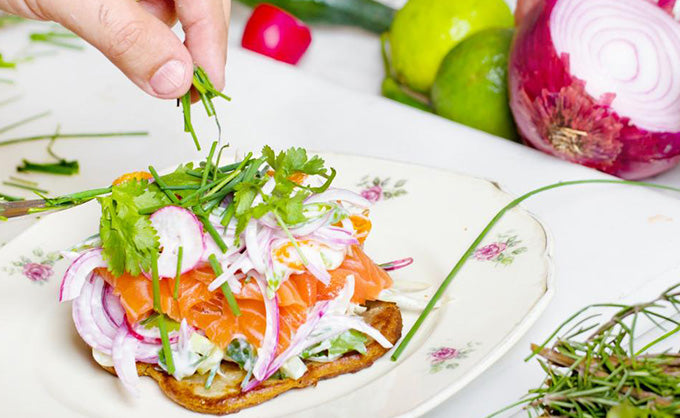While the products we put on our skin are essential to keeping it looking healthy, there are foods in your kitchen right now that can provide some added benefits. It’s important to make sure you’re eating a healthy diet if you want your skin to look and feel its best. And some of your favorite foods just might be the key to increasing your skin’s elasticity. But before we start adding to your grocery list, let’s talk about what elasticity is. Elasticity is the ability of your skin to stretch and then return to its normal state. As we age, our skin loses elasticity. Maximizing elasticity is one thing you absolutely must do if you want your skin to look younger. Luckily, there are a few foods you can start incorporating into your diet to see results!
Nuts

It’s no secret that certain nuts contain health benefits, such as better heart health. But did you know they’re also great for your skin? Your body uses the protein from the nuts to help replace dead skin cells. And that’s just one reason to keep nuts on hand for healthy skin because they provide other benefits, too. Nuts like almonds and walnuts are packed with vitamin E, which can decrease the signs of aging such as sagging and wrinkling skin. When you start to notice these signs of aging in your skin, it means there’s been a loss of elasticity, which happens to all of us as we age. Hazelnuts and regular peanuts also contain vitamin E, but not quite as much as almonds.
Vegetables

It turns out that listening to your mom when she told you to eat your veggies as a child had more benefits than you realized. Who would have thought they’d help keep you looking young? Make sure you’re incorporating a variety of vegetables into your daily diet to promote better-looking skin. Which veggies are the best? While they’re all great for you, green, leafy veggies are at the top of the must-eat list! Yellow or orange vegetables are essential as well! But how exactly do they help your skin elasticity? Vegetables are rich in antioxidants, which can help fight the damage caused by free radicals in the environment. To keep your skin looking its best, you need to be proactive in preventing damage the sun and environmental pollutants can cause.
Fish

The next time you visit your favorite restaurant, you just might want to go for the fish instead. Eating fish that is rich in omega-3 fatty acids is good for your health and for your skin. Both salmon and mackerel are two types of fish that are high in omega-3s. While the thought of consuming fats may seem like a “no-no”, there are healthy fats (such as omega-3 and omega-9) that you absolutely need in your diet. It’s the nutrients and healthy fats that we consume which can help enhance the skin’s elasticity. If your diet is too low in those healthy fats, you may notice your skin starts to look dull, feel dry, and lose elasticity.
Water

This last one should come as no surprise because we all know the importance of drinking plenty of water and keeping our bodies hydrated. Considering our bodies are made up of about 65% water, it’s essential to our wellbeing. In fact, a common sign of dehydration is a lack of elasticity in the skin. To promote healthy skin, make sure you are drinking plenty of water throughout the day. You should even start the day with a glass of water because your body actually loses hydration while we sleep. Water will keep your skin looking and feeling plump and promote a youthful appearance.
- Eye and lip contour cream to tone, tighten, smooth, and brighten delicate, mature skin around the eyes and lips.
- Hydrating Hyaluronic Acid Serum.
- Our best-selling moisturizer for dry skin .















